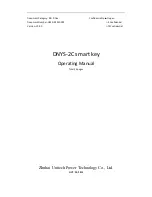
6
About Acoustic Feedback
Using the AF-70
The AF-70’s built-in feedback detection function and
extremely narrow-band filters work together to
automatically detect and eliminate feedback. Used
in sound checks, the Auto Adjust function allows fast
completion of feedback adjustments. The high-
precision design of the feedback detection and anti-
feedback filters allows pinpoint accuracy in filtering
feedback frequencies, minimizing any deterioration
in the quality of the sound.
What Is Acoustic Feedback?
Acoustic feedback, also known as howling, occurs
when the output from the speaker(s) is picked up by
a microphone, reamplified, then output again through
the speaker, causing an unpleasant oscillating whine.
Turning up the microphone volume, pointing the
microphone at the speaker, bringing the microphone
too close to the speaker, or raising speaker output
levels so that the sound enters the microphone may
very easily cause feedback.
To avoid feedback, it is
necessary to:
• Set output levels to suit the size of the particular
hall or room.
• Locate the microphone as far away from the
speakers as possible, and avoid pointing the
microphone directly at a speaker.
• Set the levels of connected equipment to
appropriate levels.
These measures will help prevent some of the more
obviously controllable types of feedback. However,
feedback sometimes occurs well below the desired
total output level. In such situations, a common
technique is to reduce the gain in the vicinity of
frequencies where feedback is most likely to occur,
and then bring the total mix up to the desired level.


































